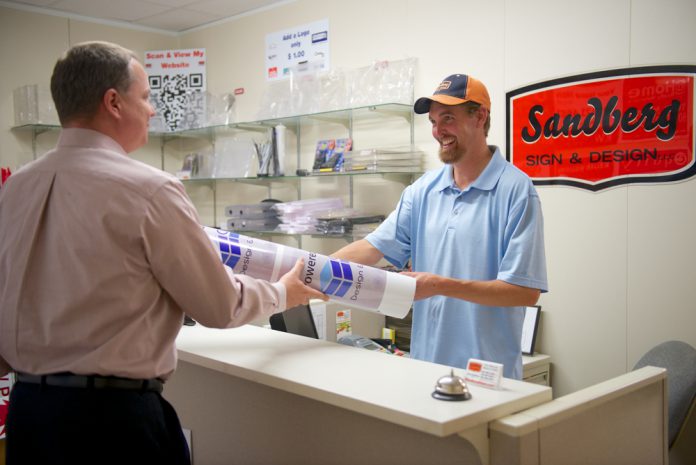 When you are wearing your sales hat, a big part of your job is to understand the psychology of the buyer. However understanding the buyer goes a lot deeper than analyzing his business needs. It also requires that you size up their personality.
When you are wearing your sales hat, a big part of your job is to understand the psychology of the buyer. However understanding the buyer goes a lot deeper than analyzing his business needs. It also requires that you size up their personality.
Some flamboyant extroverts are driven by a desire to express themselves. Other buyers, who are more cautious, are motivated by fear of making a bad decision and the need for security.
This may come as a surprise to you, but money is rarely the most important factor in making a purchase—even in B2B buying. Basing our buying decisions on dollars and cents is just too rational for a person’s impulsive nature.
Of course, nobody wants to pay too much for a product. Buyers usually want to get the most value for every dollar spent, and I will concede that there are a few automatons among us that value money above all.
In many cases, buyers with analytical personalities are involved in either engineering or finance. Usually the analytical buyer wants to know all of the minutiae of your proposal, especially the financial aspects.
Pragmatic buyers, in many cases, are also interested in dollars and cents. For these types of buyers, you need to provide them with a financial justification.
In selling fleet graphics, I usually emphasized the lifetime cost of a graphics program because I was generally the high-priced vendor, and I felt that I needed to justify my pricing.
What lifetime cost represents is the total cost of owning a product. But when selling fleet graphics, lifetime cost isn’t simply the cost of the graphics alone and the longevity of printed vinyl markings. It also entails the cost of application.
Let’s face it, some vinyl films are much easier to install than others. In costing graphics installation, many professional decal installers factor this into their pricing of a job, and, by all rights, they should.
Customers who apply their own graphics will also need to consider the cost of application. While the do-it-yourself method may seem economical, there is nevertheless a labor cost associated for their personnel to complete a job, in addition to the downtime cost for their trucks to be out of service.
And when vinyl graphics are especially difficult to apply, the waste factor is another hidden cost, which can be significant if workers are unskilled.
I cannot think of any instance where it makes financial sense for your customer’s shop personnel to install vinyl graphics. My argument to someone motivated by money is that professional installation is faster, so there is less interruption of the customer’s business.
What’s more, a professional decal installer knows how to do the job right, so this means that not only will the installed graphics look better but there will also be less chance of failure. That should appeal to the buyer who fears failure.
While the cost of application is important, many buyers often ignore the cost of removal.
When I worked for fleet graphics companies, I found that some vinyl films removed from truck surfaces very easily with little or no adhesive residue. This was a big selling feature because the graphics removal process can be unpredictable, expensive, and time consuming.
Many buyers also know the dangers of buying cheap. Who hasn’t heard that you only get what you pay for?
The problem of buying on price is that you could be wasting money on something that doesn’t satisfy your needs.
If you can discover any dissatisfaction that a buyer has with their current graphics supplier, you have a great sales opportunity. In fact, the bigger the problem, the better it is for you.
This type of buyer needs a solution fast, especially if he is answerable to a superior. His motivation is pain avoidance, and while his decision will be well thought out, it will be made without hesitation.
Many professional buyers will carefully analyze your proposal. My recommendation is to avoid these people if you can.
When I had to deal with someone in purchasing, my proposals were thorough for a couple of reasons. In many cases, a professional buyer will screen you from the people actually making the final decision. When this happens, your only contact with the real decision makers and influencers is your proposal.
The first pages of the presentation are a summary of the program complete with pricing. More often than not, it is easier to get any discussion of pricing out of the way early in a proposal. Once you have done that, everything else is a detailed explanation of the program.
In the supporting material, you want to accomplish two objectives: (1.) Create doubt in the mind of the customer by alerting him to potential problems if the job is not done correctly; and (2.) satisfy the customer’s need for security with an explanation of how your proposal avoids the pitfalls.
In explaining how you will handle your customer’s program, you will want to emphasize your experience in manufacturing and installation. Case studies of complex programs provide the evidence supporting your claims. The goal is to build the prospect’s confidence that you have the expertise to handle their program.
If your company has a long history of manufacturing excellence and financial stability, you should use this to your advantage, especially if you are competing with smaller companies.
By stating that you are not a fly-by-night organization and have the resources to correct any problem in the unlikely event that some mishap were to occur, you raise a doubt in the mind of the buyer about whether your competitors are capable of the same support.
Fear and the need for security are not always the emotions that motivate a buyer. For those business owners with a great sense of pride in their companies and their accomplishments, good-looking graphics on their trucks and in their stores that satisfy their need for expression and bolster their feelings of self-worth are the motivators.
I am not at all insinuating that there is anything wrong with a healthy ego. I am just making you aware that some buyers crave the attention and desire the best that money can buy.
These people are usually easy to spot. You can tell what their tastes are by the cars they drive and how their offices are decorated. All you can do is give them what they want.
While people would like to believe that all of their purchases are based on rock-solid logic, what really triggers their behavior is quite different. You have probably heard that people make decisions on emotion and justify or rationalize their actions with logic. This especially applies to buying behavior.
Taking the time to understand the personality of your prospect is the key to determining his or her emotional needs.
Learn to ask insightful, open-ended questions to best engage the prospect in a conversation. As self-help guru Tony Robbins says, “If you want better answers, ask better questions.”
Improve your listening skills. While the words that the prospect utters are important, you also need to learn the art of reading between the lines of what is said as well as reading body language.
Focus on the prospect. Remind yourself that your sales interview is not about you, your company, or your products—it should be all about your customer.
By Jim Hingst











